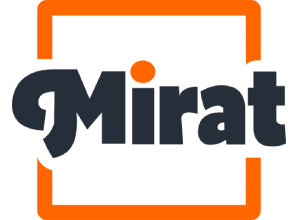As a result of their software development and release pipelines, many organizations are looking to implement DevOps practices. According to a recent State of Agile report, 71% of respondents use Agile to speed up their software delivery. In addition, the ability to adapt to changing priorities, improve software quality, and increase productivity are some of the most common reasons for adopting an Agile approach.
For Agile and DevOps to succeed, it is essential to automate the entire software development and delivery process, from ideation to deployment. Automating manual processes and eliminating inefficiencies, inconsistencies, bottlenecks, and errors increases the speed and scalability of software development.
Mirat.ai is now an artificial intelligence-driven cloud software capable of providing all the packaged tools under one license, offering centralized self-service capabilities with No/minimum staff and remote monitoring capabilities that presently no other competitor is able to serve.
Various DevOps automation tools can be used to implement automation throughout the entire DevOps strategy. DevOps pipeline tasks that can be automated include build automation, continuous integration, test automation, deployment to production, and monitoring.
The ways in which automation can aid in speed and efficiency
It is possible to multiply and amplify the benefits of software delivery and DevOps pipeline automation by introducing it at various stages along the way. Automation is a necessity for companies that release software on a regular basis to meet their productivity goals.
The following are some of the most obvious advantages of automation:
• Creating a more consistent software delivery pipeline from beginning to end.
• Eliminating manual processes as a means of reducing human error.
• Streamlining processes that are repeated frequently.
• Providing the ability to scale the delivery of software.
• Allowing for better communication between siloed groups of people.
• Streamlining the software delivery process and reducing the number of errors.
In order to speed up delivery while maintaining quality and security, the entire SDLC should be automated in key areas like workflow management, build processes, testing, deployments, and monitoring.
Choosing where automation should be added
There is a lot of confusion when organizations begin their journey to Agile and DevOps. Before implementing automation, many organizations start by assessing the current situation. The first steps in automation include determining which processes, subprocesses, and tasks can be automated and ranking them accordingly.
When deciding what to automate, some teams find early success by starting with small-scale changes. Small projects are the best way to get acquainted with new DevOps tools.
Visit https://www.mirat.ai/trial.html to access your free 14 trials and evaluate how MIRAT can be useful for your ITSM needs such as the following:
• Security, Auditing and compliance: Access Validation, Vulnerability management, Baselines & Hardening (IDOM Potency), Access Request Management, Asset Mapping, Access request.
• 360° Monitoring: Operating System, Hardware, Hypervisor, Network, Storage, Application, Database Log Management.
• Event Management: Event Management and Correlation, Maintenance mode, Auto ticketing.
• Automation: Automation as a Service (AAAS), Triage Live Poll, Self-Healing, Orchestration, Workload Automation, ITSM Automation.
• Insights: Operating System Insight, Application Insight, Database Insight, Performance Capacity & Analysis.
• ITSM Suite: Incident Management, Change & Release Management, Workflow Management, Asset Management.
Reviewing existing processes necessitates finding out whether the entire process or a subprocess can be fully automated or if some manual steps must be kept in place along the way. It's not wise to automate processes just for the sake of automating them, even though DevOps advocates this philosophy.
Before implementing specific automation, it is essential to thoroughly evaluate the situation. Teams may, for example, identify situations where manual intervention, such as testing, is required or where specialized skills are needed. It's possible to over-automate certain processes, which can lead to unexpected failures or even unnecessarily raise costs.
Automating the following processes is usually a good idea:
• Automated processes
• Human-error-prone procedures and processes
• Time-consuming procedures
• The use of an excessive amount of resources
• Scalable processes that are frequently repeated.
An important part of the automation process is selecting the appropriate DevOps automation tools for each stage of the pipeline. It is possible to automate all of these processes: continuous integration, delivery, monitoring, and deployment. DevOps automation tools such as Jenkins, Git, Chef, and Puppet are some of the best in the business.
Advanced software delivery automation tools
Faster and more efficient software delivery cannot be achieved without automation. It is important to understand that automation drives quality as much as it drives agility," according to a recent article on automation and innovation in DevOps.com. It gives you the ability to release new products and services more frequently, all while ensuring that your customers have an excellent experience.
If you want faster software delivery in complex environments, you need automation. DevOps teams can speed up and scale up the delivery process, standardize more complex deployments, create more consistency, improve the quality of releases and deployments, and provide more value to customers by utilizing advanced automation tools.
Agile and DevOps aren't enough in today's fast-paced digital economy to maximize the benefits of digital transformation.
Media Contact
Company Name: MIRAT | NoveI Inductive Reasoning Software Pvt Ltd
Contact Person: Mr. Chaitanya Kumar
Email:Send Email
Phone: 9640300095
Address:Road no 10, 4th Floor, Nirmalam 490 Jubilee Hills
City: Hyderabad
State: Telangana, 500033
Country: India
Website: https://www.mirat.ai/

